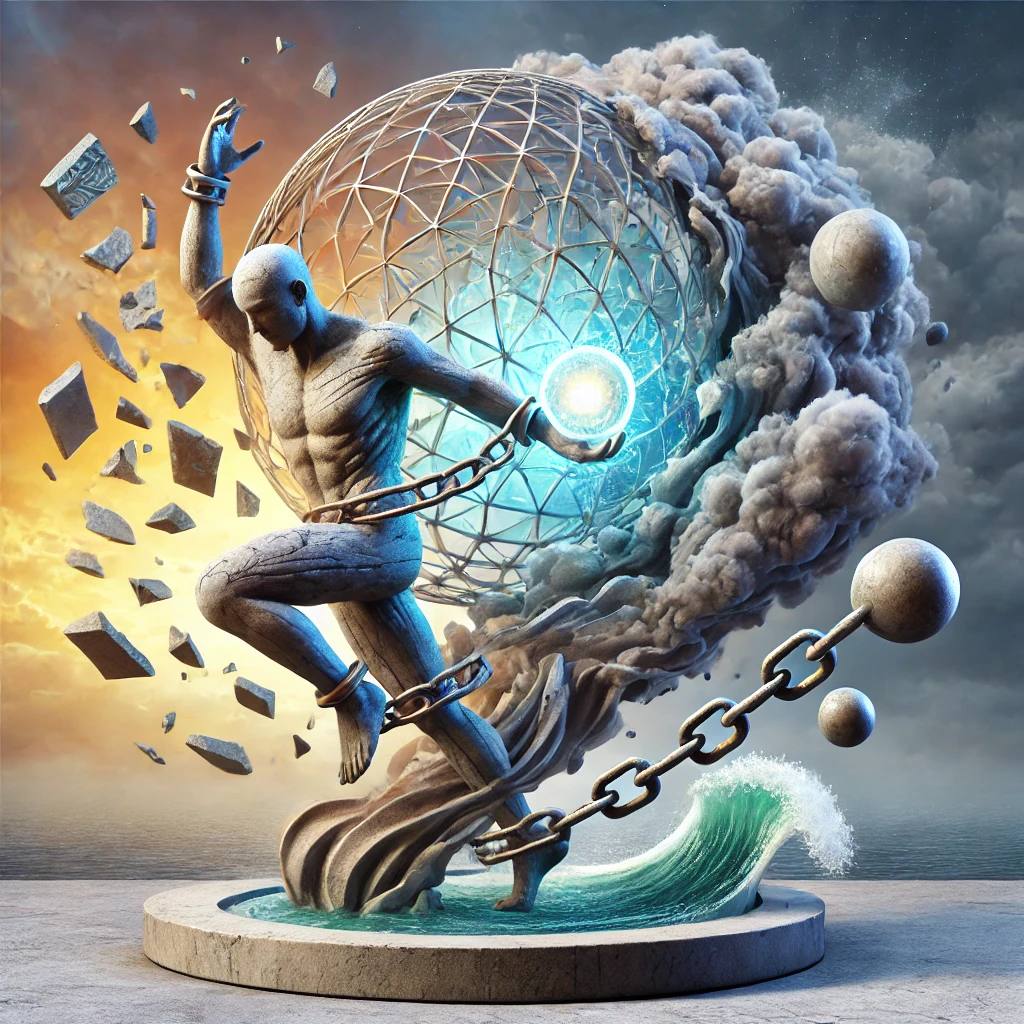Thinking beyond boundaries: liberation from traps
The mind is a powerful tool capable of transforming reality, but it is often the very source of limitations. We take one step, encounter resistance—and suddenly turn it into a rule: one mistake begins to seem like proof of eternal failure. The ocean is infinitely wider than a single drop, yet we persist in viewing it through that very drop. When we stop fixating on the particular and lift our gaze, the world reveals new paths that were previously invisible.
Dichotomous thinking is another trap that flattens the world. “Success or failure,” “friend or foe,” “all or nothing”—these frameworks create the illusion of order but actually rob life of its layers. The world, like life itself, cannot be reduced to simple schemes—it is full of transitions, shades, compromises, and paradoxes. Awareness allows us to go beyond extremes and see the space for creativity and flexibility.
When we get stuck focusing on the negative, the world takes on dark tones. We see only what destroys and stop noticing what supports. It is like looking at the world through dark glass: the light is still there, but it is hidden from view. Freedom begins where we stop fighting shadows and learn to accept everything: pain and joy, chaos and order, strength and weakness. In every darkness lies the potential for light, in every difficulty—the seed of new understanding.
Hasty conclusions and fear of the future are attempts to hold on to control over what is, by its nature, unpredictable. We start guessing what others might think, what to expect from tomorrow, how to protect ourselves from the blows of fate. But the future is not programmed—it is an open space full of possibilities. The less we cling to hypotheses and assumptions, the freer we breathe and create, grounding ourselves in the present.

There are other traps of the mind: magnification and minimization, when any mistake seems like the end of the world, and success—a trifle; emotional reasoning, when we believe that our feelings are facts, forgetting that emotions are just waves passing through us. True strength is not in ignoring emotions but in seeing them as temporary manifestations, not as truth.
The traps of “musts,” labels, personalization, catastrophizing—all these are attempts to impose our own schemes onto life, to organize chaos through the illusion of control. We demand that the world be “fair,” blame ourselves for what was beyond our influence, assign labels to people and events, trying to simplify the complex. But the world is not a system subject to our rules, but a flow in which we learn to see and accept.
The philosophy of mindfulness breaks down these artificial barriers. It shows that reality is movement, process, the constant unfolding of the new. It frees us from fear, returning our ability to live—to see light and darkness, joy and pain, to accept and create.
Liberation begins where we stop demanding certainty from the world and instead open ourselves to its infinite fullness.
This is the path to true freedom—the freedom to feel, to create, to be.